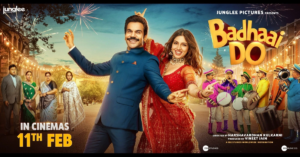Storytelling aims to communicate an idea by feeding the audience’s imagination using the storyteller’s words to paint a picture.
There are 4 elements of storytelling:
- Interaction – Interaction between the storyteller and an audience.
- Actions and words – A sequence of events conveyed through words. Words are used to describe happenings through bodily actions, facial expressions, intonation, and add emotions.
- Narration – The storyteller takes the audience on a journey and keeps the listeners engaged and wanting more.
- Listener’s imagination – Storytelling allows the listener to create a world of his own through the storyteller’s rich narration that encourages the listener’s imagination and leaves a lasting impact.
The ancient form, which is first introduced to us at a young age for entertainment, is used for several other purposes. If you wish to write a valuable story, you first need to understand its significance.
What is the significance of storytelling?
To create an impact with your storytelling, let us first understand why they are a highly preferred medium of communication.
- Establish emotional rapport – Your content and the style of narration elicit an emotional response and leave an impression on the audience, making them want more and stay attentive throughout the story.
- Simplify the idea – Would you rather read a jargon-filled descriptive text that explains a concept in detail or read a story that explains the same idea through vivid characters? Narratives about regular people have been effective in conveying tricky ideas and help create engaging, relatable, and practical examples, simplifying concepts.
- Broaden the reach – Because stories are easy to communicate and better remembered, they are spread quickly.
- Motivate – The moral of the story is the call to action that inspires and motivates the audience to do what you want them to do, which can be simply donating money or buying your products in bulk.
- Persuade – Telling emotionally arousing stories to put forth your pitch helps you tackle the counterarguments and makes it easy to persuade.
Stories, therefore, are the simplest mode to reach the masses and have them accept your idea. A clear understanding of these points will give you a concrete foundation to begin.
What are the essential tasks to prepare for storytelling?
You should be clear about what you are trying to achieve through your story, and the medium of narration, before beginning the preparations.
Understand the purpose of telling your story
Stories are told to market a product, to bring reform, to inspire, or to educate. Therefore, understand the story’s purpose first and shape the process ahead. The core message helps you determine the theme and the setting of your story.
Know the type of story you wish to tell
Stories can be told in the form of lengthy verses and also in the form of a brief incident. Once you know how your incidents need to be narrated, you can start planning according to the type you choose. There are many types of stories that express ideas differently.
- Anecdote – A short narration of an intriguing incident
- Apologue – A symbolic story that has a moral
- Chivalric romance – Medieval European romantic stories of the glory of the knights written in a prose + verse format
- Chronicle – A chronological account of historical facts and happenings
- Creation myth – Creating a story around the concept of the birth of the world.
- Etiological myth – Creating a story to explain the origins of a particular family.
- Fable – A short story that ends with a moral. It is a fictional story that includes animals, trees, birds, and inanimate objects for central characters.
- Farce – A comedy that includes silly, unrealistic situations and an exaggerated setting.
- Folklore – A collection of cultural beliefs expressed through tales and songs about animals and people.
- Joke – A short anecdote or a witty line written to cause laughter
- Legend – A historical story about a particular person that is based around unrealistic happenings
- Memoir – A collection of personal observations and experiences told in the first person
- Myths – An unrealistic story of a glorious hero, set in a thrilling, mysterious background
- Parable – An educational story meant to teach ideals and principles
- Parody – Imitating another work and presenting it humorously
- Satire – A form of storytelling where dark reality is expressed through ridicule, irony, or parody to bring a social revolution
- Short Story – A brief fictional narrative that happens in a single setting and with a few characters and can be finished in one read
- Tall tale – An over-the-top representation of the voyages and the splendors of folk characters
- Urban legend – A mythical story surrounding real, new-age people and pop culture
Choose the medium
A story is a versatile medium of communication that can be told through various mediums.
- Oral – This medium demands a skilled storyteller to engage a live audience through descriptions, gestures, and intonation to put life into the story. Because they cannot be edited, oral storytelling requires a skilled orator to be present at the moment.
- Written – Here, the storyteller writes vivid descriptions to enable the reader to imagine the scene narrated through books, articles, and blogs.
- Audio – This is a one-sided process that involves recorded orally communicated tales that can be edited. Podcasts and audiobooks use audio stories.
- Visual – Movies – live-action and animated; series and videos use a visual storytelling mode and are highly preferred by people for the rich experience it offers.
You are now ready to look at the fundamental components of a story and design your narrative accordingly.
What are the elements of a story?
If you search the web, you will find many sources debating over the elements of a story. Some argue that fundamental elements are a must-have in every story, while others argue that you can still write an impactful story without them, like in slice of life stories (which will be explained later in this article).
There are a few essential properties that must be considered to make your purpose effective.
- Entertaining and engaging
- Memorable and appealing
- Universally relatable
- Educational and useful
- Clear and organized
Setting
A setting acts as the background of the story that allows the story to grow and progress. The era it is set in, the environment of interaction, the topic type expressed – the setting covers it all.
Here is a list of settings that can be used to base a story. We will be explaining them in brief.
- Action – The protagonist faces several challenges that are described by a fast-paced narrative, physical fight with the antagonist, chases, and violent acts.
- Adventure – These stories are set in an environment other than the character’s daily surroundings with a courageous protagonist and a fast-paced narrative. The story takes the characters on a hunt with a goal, who then face challenges on their way.
- Autobiography – When a person writes about his/her own life, it is called an autobiography. It is a first-person account that expresses ideas through a life story.
- Biography – The aim of a biography is to narrate the significant events and facts of an individual’s life. A biographer chooses a subject to convey and picks events that are relevant to it.
- Comedy – This kind of storytelling involves humorous scenes and quirky characters to make people laugh, using witty lines, silly characters, jokes, wordplay, or exaggerated scenarios. Comedies are usually light-hearted and have a happy ending.
- Coming of Age – Such stories start with the main character who is in childhood and take the audience through his experiences and development till adulthood/adolescence.
- Courtroom – These stories revolve around the criminal justice system and emphasize the practices of lawyers and judges in a court trial setting rather than the criminal.
- Crime – The focus of these stories is the criminal, the crime(s), and the events after the crime, which use violent and gory descriptions and a thrilling, active narration.
- Epic – It is a lengthy account written in a poetic tone that narrates the heroic deeds and the courageous triumphs of the protagonist.
- Erotica – Such stories include explicit narrations, emphasize the sexual aspects of romance, and describe fantasies and fetishes to arouse the readers.
- Fantasy – These stories include fairies, monsters, magical and supernatural entities that act in a different, fictional universe or in a real-world setting.
- Historical – A fictional story about a historical figure or a fictional one that is set in history and incorporates the era in an authentic manner.
- Horror – Primarily characterized by characters, such as ghosts, vampires, and other supernatural beings, horror aims at scaring people and involves thrilling descriptions, shocks, eerie settings, and action.
- Mystery – A mystery includes an attempt to find answers to an unexplained happening as the characters investigate and face challenges in the course.
- Philosophical – Such stories try to discuss the philosophical aspects of ethics, principles, and morals. The story can be a narrative that subtly puts forth the philosophical ideas, or it can be a direct discussion.
- Political – These are fictional stories that comment on an ideology or a system or a satire that communicates reality through a setting that includes events, theories, actions in a political environment.
- Religion – Such stories aim at fostering spiritual growth and not necessarily write about a specific religion and talk about life’s ideals, ethics, and well-being.
- Romance – A story that revolves around the two characters falling in love and the challenges they face in the course of their romantic life.
- Science fiction – A story that is driven by partially fictional scientific laws. The main characters can be anyone – humans, machines, robots, animals, who are on an adventure.
- Slice of Life – It is a story that portrays snippets from characters’ life and comes with an open-ended climax. The goals and actions of the characters are random and dissonant, and there is no character development, conflict, or context. This type of setting is prevalent in anime.
- Thriller – Such stories are fast-paced, action-packed, mysterious, and aim at inducing fear, amusement, curiosity, and excitement in the audience.
- Urban – These stories shed light on the dark side of city life through a realistic narrative and revolves around facets, such as poverty, drugs, gangs, crime, and sex.
- War – It is usually a story set against a battle background with military men preparing, fighting, or recovering from war. The story involves a thrilling narration, battle scenes, courageous characters, an element of strategy and sacrifice.
Check out this article by the Nashville Film Institute for a detailed list of over 120 genres.
Plot
The plot is everything that unfolds in the course of a story. The introduction, the peak action, and the climax together make a plot. It also tells you how your story progresses and what critical events contribute to your hero’s journey.
Jerry Flattum for ScriptMag has explored the various plot styles given by legendary writers. Read this article for the complete list.
Character
Your structure and setting are cues to your character design; for instance, fables require animals and plants; Chivalric Romance demands knights and heroes. Your character should have a personality that complements the plot and can be anyone, from a human to a robot. It is effective when the audience can relate to the character and live his journey.
Conflict
Conflicts are the challenges that every protagonist meets before reaching the goals which have to be resolved to add flavor to the story. Conflicts can be designed between any two or more entities:
- Animal vs. self
- Animal vs. animal
- Animal vs. environment
- Animal vs. technology
- Animal vs. supernatural
- Animal vs. divine entity
Here we have used the word animal to denote the main character.
Conflicts are an emotionally appealing section of the story that offer subtle lessons to the audience. However, you cannot keep the story twisted and turbulent all along. All the problems come to an end at the resolution, which is the deciding climax of your story. It does not have to be good and happy always, and you should plan the resolution according to the genre, the characters, and the core message you wish to convey.
Theme
The theme is the core intention, the moral of the story – the idea that the storyteller wants to communicate.
- Redemption – Portrays success after a disheartening failure; the movie He Never Died is a redemption-themed story.
- Resurrection – Rising again from the dead; Charles Dickens’s famous novel, A Tale of Two Cities, works mainly on the resurrection theme.
- Transformation – The physical or psychological transformation of a character, Dr. Jekyll and Mr. Hyde depicts a psychological disorder that transforms Dr. Jekyll into Mr. Hyde.
- Vengeance – A journey of a character seeking revenge; the John Wick franchise is an excellent example of a vengeance-themed story.
- Justice – Characters are fighting for justice – criminal or social; Just Mercy is a critically acclaimed justice-themed movie.
- Sacrifice – The character gives up on desires, possessions, or even his/her life; The Chronicles of Narnia: The Lion, The Witch, The Wardrobe depicts a moving scene of a king’s sacrifice.
- Jealousy – Depicts the eerie, destructive face of jealousy; Black Swan, a psychological thriller, captures the emotion perfectly.
- Friendship – Showcases the bond as an unbreakable emotion; Bride Wars shows the ups and downs in a friendship.
Now that you have your fundamental elements in place, it is time to begin the story. Are you having a hard time deciding how to sequence your events? Let us move further and look at some attractive ways to edit your narrative.
How to present the story?
You can have the audience gasping right from the first moment, or you can gradually build the story and keep the audience guessing; that is up to you. We are listing eight popular techniques to sequence the events. You can read more about these here.
- The monomyth – It takes the audience on an adventurous journey with the hero, in which adversities take the hero on a quest, where he fights to restore peace and returns with respect.
- The mountain – Such stories involve dramatic events that depict highs and lows in the character’s life. The story gradually thickens as it reaches a peak, and it is a topsy turvy road ahead to an intense climax.
- Nested loops – The storyteller layers the narratives to take the audience on a journey to the source of the central idea.
- Sparklines – This story flow is commonly found in inspirational speeches of charismatic leaders, as it separates reality from utopian ideas and emotional appeals to the audience.
- In media res – The story starts with the peak event, and then a chronological narrative leads the audience to the peak event. The idea is to excite the audience right from the first instance without giving away any spoilers.
- Converging ideas – Such a flow shows how small concepts that are equally important work cohesively to the creation of a whole.
- False start – The storyteller starts with a predictable narration, disrupts the flow, and starts again.
- Petal structure – Such plots include several unconnected characters that express a different aspect of a single idea. The story progresses as these characters are introduced one by one and finally woven into a whole.
Finally, you have your story flowing. Now, we look at a few things to consider that will make your story an audience favorite.
- Know your target audience – Understand your message and the audience that will be attracted to your theme and choose an appropriate setting, vocabulary, conflicts, and values accordingly.
- Make your narratives visually rich – The audience will pay attention as long as they are a part of the hero’s journey. Use descriptions that allow the listeners to visualize the adventures and accompany the hero, and allow the audience to use their creativity to fill in the colors.
- Amuse and excite your audience – The audience craves novelty and excitement; therefore, predictable plots and plain progress should be avoided. Do not give away the moral too early and surprise the audience with a dramatic climax.
- Appeal to the emotions – Make your narrative unforgettable and emotionally appealing by using relatable descriptions that set the mood.
- Make every character unique – Avoid stereotypical and predictable character designs, make them quirky instead, and ensure that the personality and the aspirations of your protagonist do not overlap with the supporting characters.
- Maintain the theme – The focus of your story is the protagonist and his journey towards the goal. You can add supporting characters to enhance the protagonist’s impression but do not make them overpowering.
The objective of storytelling can be successfully achieved by looking at all the factors and concepts. However, an impactful story comes effortlessly from the storyteller himself. Dig deep into your emotions, revisit your experiences and lessons, and pour them into the narrative. Explore your inner self, your feelings, and the message that you wish to convey.














